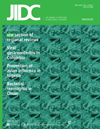Aeromonas-Associated Infections in Developing Countries
DOI:
https://doi.org/10.3855/jidc.277Keywords:
Aeromonas, Developing countries, Diarrhea, Extraintestinal infections, Laboratory diagnosis, Antibiotic resistanceAbstract
Although their role in gastroenteritis is controversial, Aeromonas species are recognized as etiological agents of a wide spectrum of diseases in man and animals. In developing countries, potentially pathogenic Aeromonas sp. are very common in drinking water and in different types of foods, particularly seafood. Several food-borne and water-borne outbreaks as well nosocomial outbreaks associated with aeromonads have been reported. Significant association of Aeromonas sp. with diarrhoea in children has been reported from several countries. These organisms are important causes of skin and soft-tissue infections and aspiration pneumonia following contact with water and after floods. High incidence of antimicrobial resistance, including to third-generation cephalosporins and the fluoroquinolones, is found among Aeromonas sp. isolated from clinical sources in some developing countries in Asia. Isolating and identifying Aeromonas sp. to genus level is simple and requires resources that are available in most microbiology laboratories for processing common enteric bacteria. The present review will cover the epidemiology, clinical syndromes, low-cost diagnostic methods, and antimicrobial resistance and treatment of Aeromonas infections in developing countries.Downloads
Published
2008-04-01
How to Cite
1.
Ghenghesh KS, Ahmed SF, El-Khalek RA, Al-Gendy A, Klena J (2008) Aeromonas-Associated Infections in Developing Countries. J Infect Dev Ctries 2:081–098. doi: 10.3855/jidc.277
Issue
Section
Reviews
License
Authors who publish with this journal agree to the following terms:
- Authors retain copyright and grant the journal right of first publication with the work simultaneously licensed under a Creative Commons Attribution License that allows others to share the work with an acknowledgement of the work's authorship and initial publication in this journal.
- Authors are able to enter into separate, additional contractual arrangements for the non-exclusive distribution of the journal's published version of the work (e.g., post it to an institutional repository or publish it in a book), with an acknowledgement of its initial publication in this journal.
- Authors are permitted and encouraged to post their work online (e.g., in institutional repositories or on their website) prior to and during the submission process, as it can lead to productive exchanges, as well as earlier and greater citation of published work (See The Effect of Open Access).








